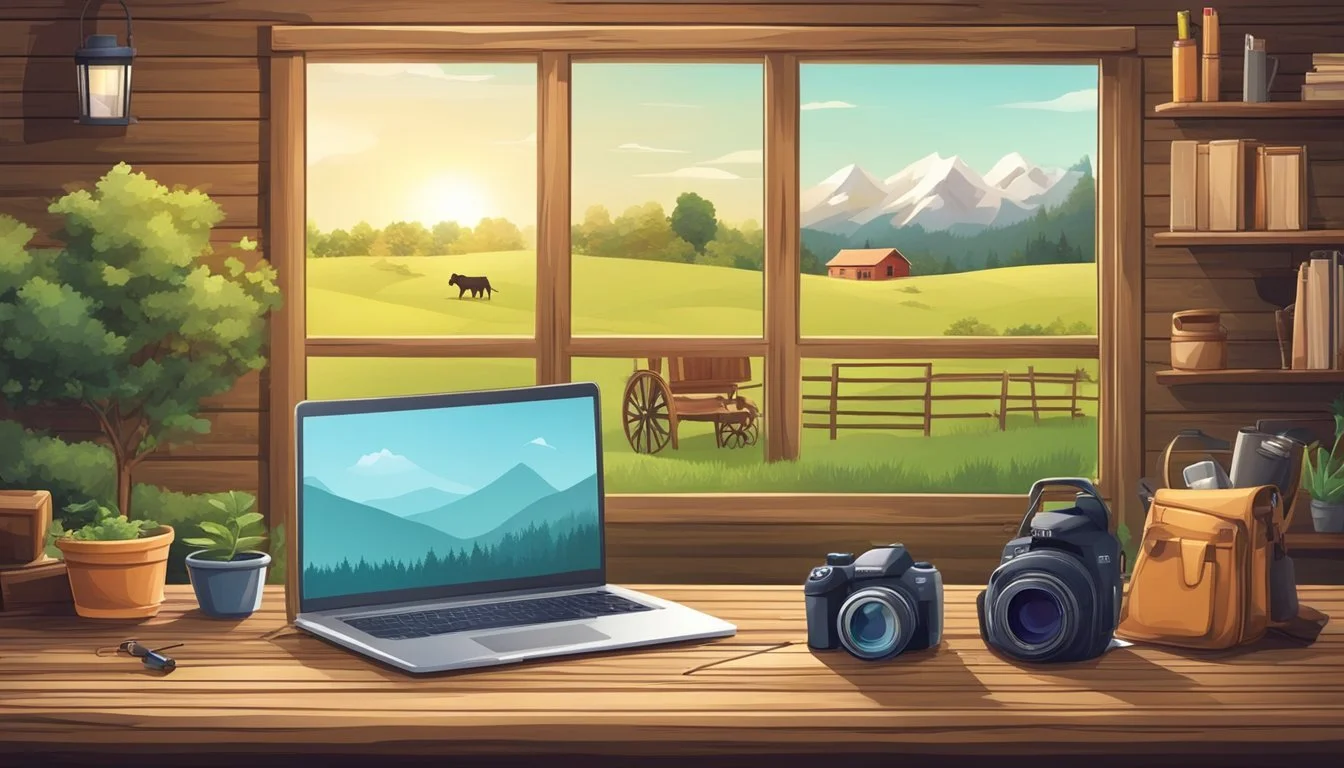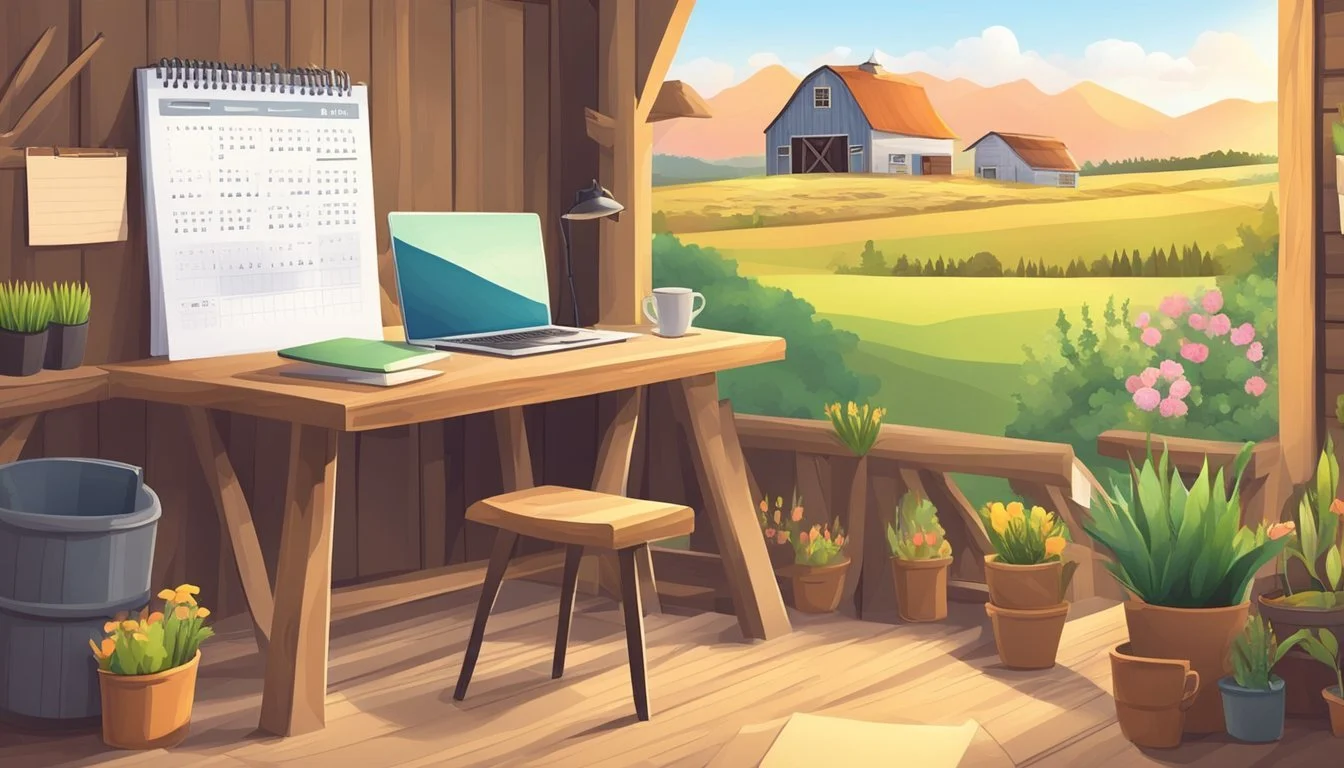How to Start a Homestead Blog or Vlog
Essential Steps for Sharing Your Journey
Starting a homestead blog or vlog can be an exciting endeavor for anyone passionate about self-sufficiency, sustainability, or country living. It's a platform where individuals can share their journey, document the ups and downs of homesteading life, and connect with a community of like-minded people. Whether one chooses to write detailed blog posts or create engaging video content, the essence of this venture lies in storytelling and authenticity.
To initiate a homesteading blog or vlog, one needs to determine their core message and what unique perspective they can offer to their audience. A compelling narrative not only helps in defining the blog's or vlog's purpose but also in attracting and retaining viewers and readers. The content could range from tutorials and how-tos, sharing day-to-day experiences, or providing insights into the challenges of homesteading.
Creating a successful homestead blog or vlog requires a mix of passion, dedication, and technical know-how. From selecting a domain name that resonates with the homesteading theme to capturing the essence of rural life through a lens, each step is crucial in building a platform that accurately reflects one’s journey and expertise in homesteading. Engaging with the audience through consistent content, high-quality visuals, and a genuine voice is fundamental in establishing a trusted and informative online presence.
Determining Your Homestead Narrative
When embarking on the journey of homestead blogging or vlogging, the content creator must first articulate the narrative of their digital presence. This involves a multi-faceted process where the creator reflects upon their niche, passion, purpose, and audience.
Niche: Identifying a specific area within homesteading, such as organic gardening or self-sufficient living, allows for targeted content that can fill a gap in the online community.
Passion: The homesteader's enthusiasm for their lifestyle should shine through their content. It's their unique voice that will differentiate their blog or vlog from others and engage the audience.
Purpose: Clear objectives should guide the homesteader's narrative. Whether it's to educate, inspire, or simply share their daily life, having a defined purpose keeps content focused.
Audience: Understanding the audience is critical. They need to know who they are speaking to and what their audience seeks to learn or experience through their blog or vlog.
Knowledge: The content creator's expertise on homesteading will lend credibility to their narrative. Showcasing their knowledge invites trust and loyalty from the audience.
The creator's narrative is not just a reflection of their homestead but also a platform to contribute valuable insights and discoveries that can benefit others aspiring to lead a similar lifestyle. Here's a simple table to help clarify these points:
Niche: Area of specialization within homesteading
Passion: Enthusiasm and love for the lifestyle
Purpose: Reason behind creating content
Audience: Intended viewers or readers
Unique Voice: Personal style and perspective
Knowledge: Acquired skills and understanding of homesteading
Remember that the homestead narrative is not static; it evolves as the homesteader grows in their experience, skills, and as they fine-tune their approach in response to audience engagement.
Planning Your Blog's Structure
When starting a homestead blog or vlog, careful planning of the blog's structure is crucial. This includes selecting a platform, defining content strategies, establishing branding, understanding monetization, and integrating social media.
Selecting a Content Platform
One must choose a content platform wisely as it lays the foundation of the blog or vlog. WordPress.org is a popular option for its customization capabilities and extensive library of plugins. It's a self-hosted solution, meaning one needs to separately arrange a hosting service such as SiteGround or Bluehost. They not only provide hosting services but also guide users in domain name registration.
Defining Your Content Strategy
A well-defined content strategy should map out the steps for content creation, with a mission and goal that reflects the homestead's values. This may involve outlining topics related to sustainable living, self-sufficiency, and organic farming. It should also take into account SEO best practices to help target the right audience and increase visibility.
Establishing Clear Branding
Branding encompasses the blog's logo, brand colors, fonts, and overall design, which must resonate with the blog or vlog's mission. These elements should be consistent across all pages and posts. Additionally, a unique and memorable domain name reinforces brand identity and aids in audience recall.
Understanding Monetization Options
Multiple routes exist for making money blogging, including ad revenue, sponsored content, and affiliate marketing. Knowing these options allows one to build a strategy for passive income that aligns with their content and audience. However, it's essential to start with quality content and a strong community before focusing on monetization.
Exploring Social Media Integration
Effective use of social media platforms—Facebook, Twitter, Instagram, and Pinterest—can greatly extend a blog's reach and foster a community. Integrating these platforms enables one to promote the blog or vlog, engage with the audience, and drive additional traffic back to the homestead blog or vlog.
Setting Up Your Blog or Vlog
When starting a blog or vlog, it's crucial to establish a strong foundation. This involves selecting a reliable hosting service, choosing a domain, personalizing the aesthetic of your site, strengthening SEO strategies, and generating engaging initial content.
Securing a Domain and Hosting
The first step is to choose and register a domain that reflects your homestead's brand. Services like Siteground make this process straightforward, with options to both purchase a domain and acquire hosting in one place. When you select a hosting plan, ensure it aligns with your expected website traffic and storage needs.
Customizing Your Website's Appearance
After setting up hosting and a domain, personalize your website with a visually appealing theme. Utilize customizable graphics, colors, and overall aesthetic to match your homestead's ethos. Most hosting services come with easy-to-navigate customization panels that guide content creators through the site's aesthetic personalization process.
Optimizing for Search Engines
To increase visibility, incorporate an SEO strategy from the beginning. Plugins like Yoast SEO aid in optimizing your content for search engines, guiding you through best practices to improve your blog or vlog's chances of appearing in search results.
Creating Your First Content Pieces
Content is pivotal in attracting and retaining audience interest. For bloggers, the focus is on writing, editing, and publishing high-quality posts. For vloggers, recording footage, incorporating effective editing, and creating eye-catching thumbnails are key steps. Regardless of the format, you should aim to publish content that reflects the unique perspective and value of your homestead.
Remember, consistency in your branding, visual identity, and content quality is instrumental in setting your blog or vlog up for success.
Content Creation and Editing
Creating compelling content and refining it through editing are pivotal to the success of a homestead blog or vlog. This involves crafting informative blog posts, producing engaging vlog content, and enhancing user engagement for better reach and community building.
Writing Blog Posts
When writing blog posts, one should focus on delivering value to their audience. Homestead bloggers need to research extensively and provide actionable tips. The post content should be SEO-friendly to increase traffic from search engines. Regularly posting well-composed articles that address the needs of the community is a vital practice.
Producing Vlog Content
Producing a vlog involves investment in a quality camera and setting up proper audio and lighting to ensure a visually appealing and audible video. The essence of vlogging lies in the creator's ability to effectively shoot and edit content that resonates with their viewers. One key to a successful vlog mentioned in the Artlist.io guide is to capture the viewer's attention in the first few seconds.
Improving User Engagement
To foster a sense of community, it is crucial to actively promote blog and vlog posts across social media platforms and encourage comments and feedback. Engaging with the audience by responding to comments can lead to increased user engagement and create a loyal following. As noted in tips from A Modern Homestead, installing functional tools such as WordPress can streamline the publishing process, making it easier to manage content creation and maintain consistency.
Growing and Marketing Your Homestead Blog/Vlog
Growing and marketing a homestead blog or vlog involves strategic planning and consistent effort to attract and retain an audience. Success in this space is often achieved through engaging content, community participation, diverse media channels, and analyzing performance metrics to refine strategies.
Leveraging Social Media
To effectively promote a homestead blog or vlog, one must utilize social media platforms to reach a target audience. Facebook and Instagram can be powerful tools for sharing snapshots and stories of rural life, garnering traffic, and building branding. Utilizing Twitter and Pinterest also drives engagement through timely posts and visually appealing content pinned to niche-specific boards.
Engaging with the Homestead Community
The homesteading community is a group of like-minded individuals who often appreciate personal engagement. Responding to comments, participating in forums, and sharing experiences help in nurturing a community around a blog or vlog. This not only increases traffic but also establishes credibility within the niche.
Expanding Through Multimedia
Diversity in content delivery is key to grabbing attention. Podcasting offers an audio dimension to the homestead narrative, while vlogging adds a visual element. High-quality video blogs necessitate a good camera and audio setup, adding authenticity and value to the content. Incorporating various multimedia forms can attract a broader audience.
Collaborating for Cross-Promotion
Partnerships with other bloggers and vloggers through collaboration projects can tap into new audiences. Affiliate marketing, sponsored content, and guest posting on established platforms are tactics to both diversify the content offering and drive additional traffic. This also aids in building a network within the niche community.
Analyzing Performance and Adapt Strategically
Finally, tracking the performance through analytics tools enables the homestead blogger or vlogger to make data-driven decisions. Understanding SEO principles and monitoring which content resonates with the audience allows for strategic adaptation and targeted content creation that serves the interests and needs of the audience.
Advancing Your Blog/Vlog Into a Business
Transitioning a homestead blog or vlog from a hobby to a business requires strategic planning and the implementation of effective monetization methods, while maintaining a balance between expressive content and business decisions. It necessitates exploration of various income streams beyond conventional advertising, ensuring diversity and sustainability of revenue.
Implementing Monetization Strategies
Affiliate Marketing: A blog or vlog can generate income by partnering with companies relevant to homesteading, such as seed distributors or tool manufacturers. Including affiliate links in content enables the creator to earn commission on sales.
Ad Revenue: Enabling advertisements on blog posts or vlog content provides a way to earn passive income based on views or clicks. Platforms like Google AdSense make it straightforward to integrate ads into content.
Balancing Creative and Business Decisions
Branding: The content creator must develop a strong brand identity that aligns with their mission and resonates with their audience. A consistent brand helps stand out in a competitive market.
Decision-Making: Every piece of content should be evaluated for both its creative value and its potential to attract sponsorships, considering how it might influence profit margins while preserving the blog or vlog's integrity and authenticity.
Exploring Additional Revenue Streams
Sponsored Content: Engaging in partnerships for sponsored posts offers direct payment for showcasing a brand's products or services that align with homesteading life.
Products and Services: Creators can expand their brand by offering merchandise, courses, ebooks, or consultations related to homesteading topics.
Travel Vlog Sponsorships: Those who run a travel vlog can seek sponsorships to cover expenses in exchange for featuring a location, often providing a lucrative opportunity for both parties.
Addressing Common Challenges and Solutions
Starting a homestead blog or vlog involves not just creativity and dedication but also overcoming a variety of challenges. This section provides actionable solutions to technical hurdles, content creation in a competitive niche, and maintaining the drive for sustainable growth.
Dealing with Technical Issues
Technical issues are a common stumbling block for many bloggers and vloggers. From setting up the domain to dealing with hosting service glitches, they pose significant hurdles. One common problem is a lack of technical knowledge, which can be mitigated by using resources such as easy-to-navigate hosting services. For example, Siteground is known for its user-friendly interface and helpful support, as detailed on A Modern Homestead. To avoid technical problems, one should select reliable web hosting, integrate effective plugins for functionality, and consistently backup content.
Navigating Content and Competition
When entering the field of homestead blogging, creators face the challenge of content saturation and competition. To stand out, bloggers and vloggers should cultivate a unique voice and provide content that reflects their passion and mission. Collaboration with peers rather than competition can result in mutual growth and increased traffic. Bloggers like Lisa from Farmhouse on Boone share their journey authentically, which draws a dedicated audience.
Ensuring Sustainable Growth and Motivation
Long-term success in blogging or vlogging requires sustaining growth and motivation. One should set clear goals and periodically reflect on their progress. To maintain motivation, focus on the mission of the homestead and the goal to educate and inspire others. The bloggers at Grow Where You Sow suggest finding courses and communities for continuous learning and support. Balancing informative content with personal stories can keep both the creator and the audience engaged over time.
Conclusion
Starting a homestead blog or vlog can be an enriching venture. It allows individuals to reflect on their journey, share valuable insights, and connect with like-minded audiences. As content creators review their growth and strategies, they should remember that success in blogging or vlogging comes from consistent quality content, engagement with the community, and adapting to changes with a forward-looking approach.
Bloggers should evaluate their past content, noting what resonates with their audience. Vloggers might analyze viewer statistics to gauge interest and trends. This reflection guides future topics and formats, allowing the creator to innovate and maintain audience interest.
Key components for a successful homestead blog or vlog include:
Authenticity: Audiences appreciate genuine content.
Consistency: Regular updates keep visitors engaged.
Engagement: Responding to comments and questions builds community.
Quality: Well-crafted posts or videos are essential.
Blogging or vlogging about homesteading not only shares one's lifestyle but also contributes valuable knowledge to others interested in the field. As they grow, creators should prioritize the evolution of their craft, ensuring their blogs or vlogs remain relevant and informative.








